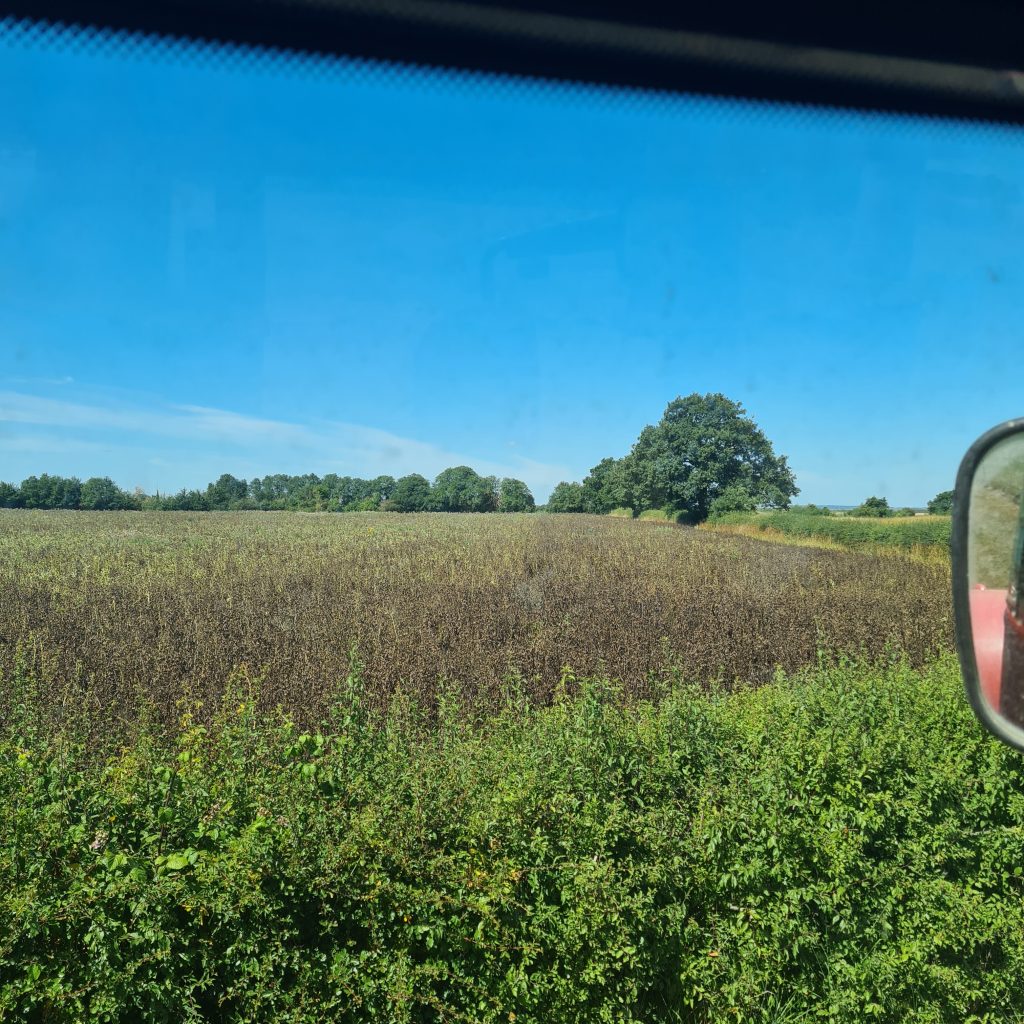Autumn Drilling
After the summer’s hot, dry and easy harvest, my drilling season proved to be somewhat frustrating. Soils were baked hard and cracked right through until the middle of October, small bits of 3 to 5 millimetres of rain dried within twenty-four hours meaning that even if I could get seed into the ground, it would have had to sit and wait for considerable rain to trigger germination. By about the fifteenth of October, land after winter beans and lucerne were just moist enough down to about an inch and so I was able to drill into this shallow layer with the Sim-tech. Pre-em herbicides and Avadex went on the day after and have done a brilliant job of stopping blackgrass emerging with the wheat. Unfortunately, wheat stubbles and land after linseed were so cracked to depth, and with my high magnesium levels setting the surface like concrete, there was no way they could be drilled. Of course, then the weather turned and it was then a case of trying to find a couple of consecutive dry days to do any more drilling. I did manage to get some winter barley into some wheat stubbles around the tenth of November, and although it was sort of “kicking mud of your welly boots getting back in the cab” conditions, it has now come well, albeit with a little blackgrass for company. I still haven’t drilled the ex-linseed ground and don’t think there is much chance now. This is proving to be a bit of a flaw in my system. Linseed is a fantastic crop for me, I always get the best wheat yields afterwards and it leaves the soil in perfect condition. It doesn’t need to be drilled too early in the Spring allowing time for the soil to dry and because I have a Stripper Header, it is quick and easy to harvest. The only problem is that for the following crop, I have to use my Moore Uni-drill to get through the standing linseed, the tined Sim-tech bungs up within a few yards. Whereas the Sim-tech will go in wet or dry conditions, the Moore is much fussy, too dry and it just rolls along on top, too wet and it smears the slots and just make a mess. Unless the weather co-operates, I can end up not getting a crop in, which has happened once or twice before.
Headland Effect
Like several other longer term no-tillers I have spoken to, my headlands are yielding more than the rest of the field. When this started to show a few years ago, I thought that maybe there was some sort of benefit from natural biology encroaching from the hedges and trees around the outside. It is now obvious though, that from the sharp drop off in parallel lines around the headlands, the effect is directly related to where I am turning with drilling, harrowing and rolling operations; the outside of the field is being compressed twice or three times as much as the centre of the fields. All my field operations are done at different angles, straw raking at 45 degrees, drilling 15 degrees from the previous year, post drilling harrowing and/or rolling at up to 90 degrees; this means that every headland is a turning headland so the effect goes right round every field. I now think that the headlands are how things should be and that there is something going wrong with the rest. It appears that this no-till soil is becoming too loose, too free draining and too aerobic. It seems to me that the physical is affecting the biological, and therefore there is a difference in the chemical (nutrient availability).
Back in the summer I decided to do some investigations, taking soil and tissue samples from obviously good headlands and out in the main parts of fields of wheat and beans. I now have Olson, Albrecht, La Motte and Total test results, tissue analysis, mycorrhizal colonisation and comprehensive soil biology analysis. There is a marked difference in Phosphate availability on the Olson tests but all the other soil tests show the same levels across all samples. Mycorrhizae are no different, but there are some big differences in fungal:bacteria ratios and the numbers of some protozoa are vastly different. I am starting to build a picture of what is going on and will be doing more complex biology tests when the soil warms up in the spring. I would like to thank Robert Plumb of Soil Fertility Services for his help in organising the testing, sending samples to many different laboratories across the country. Robert recognised the importance of finding out what is going on in the soil, and whether it had implications to the general idea as to whether we should be striving for more aerobic and fungal dominated soils.
